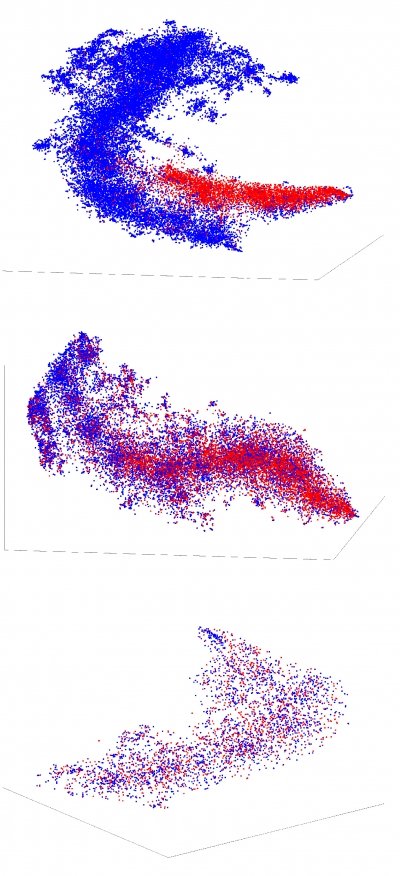Machine Learning Reduces Uncertainty in Breast Cancer Diagnoses

A Michigan Tech-developed machine learning model uses probability to more accurately
classify breast cancer shown in histopathology images and evaluate the uncertainty
of its predictions.
Breast cancer is the most common cancer with the highest mortality rate. Swift detection
and diagnosis diminish the impact of the disease. However, classifying breast cancer
using histopathology images — tissues and cells examined under a microscope — is a
challenging task because of bias in the data and the unavailability of annotated data
in large quantities. Automatic detection of breast cancer using convolutional neural
network (CNN), a machine learning technique, has shown promise — but it is associated
with a high risk of false positives and false negatives.
Without any measure of confidence, such false predictions of CNN could lead to catastrophic
outcomes. But a new machine learning model developed by Michigan Technological University
researchers can evaluate the uncertainty in its predictions as it classifies benign
and malignant tumors, helping reduce this risk.
In their paper recently published in the journal IEEE Transactions on Medical Imaging, mechanical engineering graduate students Ponkrshnan Thiagarajan and Pushkar Khairnar
and Susanta Ghosh, assistant professor of mechanical engineering and machine learning expert, outline
their novel probabilistic machine learning model, which outperforms similar models.
b) medium uncertainty and 11 c) high uncertainty. A dimensionality reduction of the
images reveals that the images with low uncertainty (11 a) show clear distinction
between the benign and malignant images. These are the images with low uncertainty
are easily separable in low dimensions and the machine learning model is confident
in classifying these images. Whereas the images with high uncertainty are randomly
distributed in three dimensions (11 c). For medium uncertainty images, the images
are clustered without a clear distinction of classes. Thus, we explain the uncertainty
quantified by the machine learning model. Image Credit: Ponkrshnan Thiagarajan
“Any machine learning algorithm that has been developed so far will have some uncertainty
in its prediction,” Thiagarajan said. “There is little way to quantify those uncertainties.
Even if an algorithm tells us a person has cancer, we do not know the level of confidence
in that prediction.”
From Experience Comes Confidence
In the medical context, not knowing how confident an algorithm is has made it difficult
to rely on computer-generated predictions. The present model is an extension of the
Bayesian neural network — a machine learning model that can evaluate an image and
produce an output. The parameters for this model are treated as random variables that
facilitate uncertainty quantification.
The Michigan Tech model differentiates between negative and positive classes by analyzing
the images, which at their most basic level are collections of pixels. In addition
to this classification, the model can measure the uncertainty in its predictions.
In a medical laboratory, such a model promises time savings by classifying images
faster than a lab tech. And, because the model can evaluate its own level of certainty,
it can refer the images to a human expert when it is less confident.
But why is a mechanical engineer creating algorithms for the medical community? Thiagarajan’s
idea kindled when he started using machine learning to reduce the computational time
needed for mechanical engineering problems. Whether a computation evaluates the deformation
of building materials or determines whether someone has breast cancer, it’s important
to know the uncertainty of that computation — the key ideas remain the same.
“Breast cancer is one of the cancers that has the highest mortality and highest incidence,”
Thiagarajan said. “We believe that this is an exciting problem wherein better algorithms
can make an impact on people’s lives directly.”
Next Steps
Now that their study has been published, the researchers will extend the model for
multiclass classification of breast cancer. Their aim will be to detect cancer subtypes
in addition to classifying benign and malignant tissues. And the model, though developed
using breast cancer histopathology images, can also be extended for other medical
diagnoses.
“Despite the promise of machine learning-based classification models, their predictions
suffer from uncertainties due to the inherent randomness and the bias in the data
and the scarcity of large datasets,” Ghosh said. “Our work attempts to address these
issues and quantifies, uses and explains the uncertainty.”
Ultimately, Thiagarajan, Khairnar and Ghosh’s model itself — which can evaluate whether
images have high or low measures uncertainty and identify when images need the eyes
of a medical expert — represents the next steps in the endeavor of machine learning.
Michigan Technological University is a public research university founded in 1885 in Houghton, Michigan, and is home to more than 7,000 students from 55 countries around the world. Consistently ranked among the best universities in the country for return on investment, the University offers more than 125 undergraduate and graduate degree programs in science and technology, engineering, computing, forestry, business and economics, health professions, humanities, mathematics, social sciences, and the arts. The rural campus is situated just miles from Lake Superior in Michigan’s Upper Peninsula, offering year-round opportunities for outdoor adventure.







